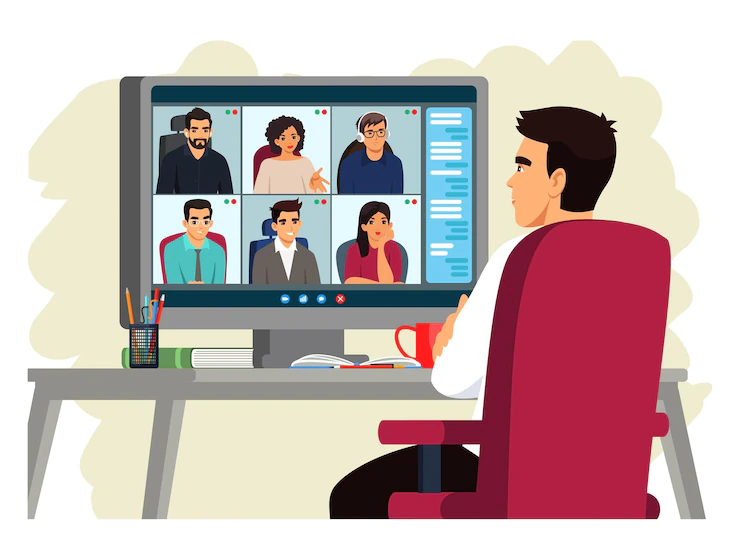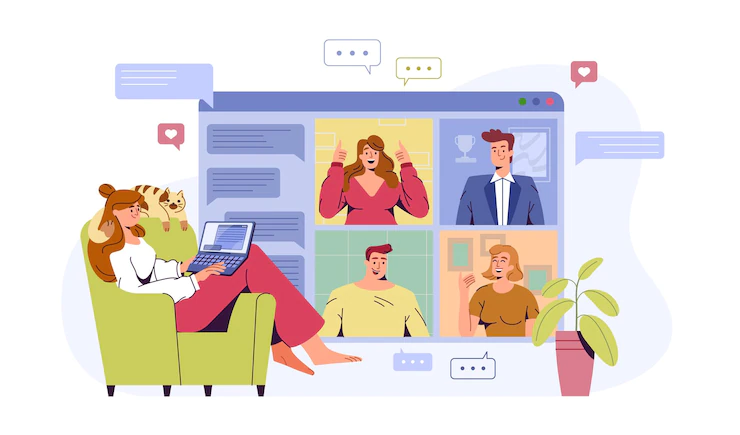Why training videos?
Videos are currently a popular training resource in many corporate sectors.
When you intend to train your staff on a broader scale, training videos can be a great resource because you can reach a much wider audience with just one video.
But to create engaging and useful video resources is the point here. So, how do we do it?
With this article, we will know how can you create excellent video resources and engage your employees with better learning retention.
There has also been a major conflict that videos are not a form of active learning hence they can be less engaging. But with great research and knowing the requirements of your audience, you can produce valuable resources for your audience.

What is a training video?
Training videos are educational resources that are utilized to train employees for upskilling. The training videos can be corporate or non-corporate.
The videos can differ in the size, templates, and also the way the content is delivered. For a successful program, you must analyze what your audience will like the most. Let us see what are the types of training videos that you can utilize:
Types of training videos
1. Instructor-led videos
As the name suggests, these videos are led by the instructor and are often called talking head videos as just one person is distributing the content. The equipment you need for these videos is a professional camera, microphone, and video editing software. These are excellent resources for any employee who learns better with auditory resources.
2. Screen capture videos
These videos are great if you want to explain your products or services. These are used for tutorial videos wherein you can show how a particular product or service works with a voice-over. You need a microphone and video editing software for making these videos.
3. How-to videos
These videos guide the learner throughout the process. These videos provide an elaborated step to step guide which helps the users to understand the courses better and also retain the knowledge.
The equipment you will be requiring for these videos will be a camera, tripod, microphone, and video editing software.
4. Animated videos
If you have the right resources animated videos can be a great resource for making your complex training program a bit easier. Also, if you want to save time in processing and executing, you may utilize these animated videos. You need a microphone for voiceover and a video editor for animation.
5. Interactive videos
These videos are supposed to be the most engaging and effective way of training. A user has to complete a definite level of video and choose a path to move forward with the next part of the video. They can be time-consuming as compared to other videos but they also provide the best results for the engaging audience.
6. The employee created videos
These videos are created by the audience to share their knowledge with their peers. Employees often learn the best from their peers and when employees talk about their experiences and practical examples, it becomes much easier. Also, they will be able to polish their skills while preparing for these training courses.
We learned what are the types of training videos, but making an engaging one remains the question. So, let us see what ways you can design your training videos. First things first, you need to learn what is the equipment used for making training videos:
- HD video camera
- Tripod
- Good lighting
- Professional microphone
- USB condenser microphone
- Video editing software
- Video animating software
Before choosing your equipment, you must know what type of video you are producing. The equipment you are choosing should be appropriate for the type of videos you are creating.
With this, let us see the ways to make engaging and effective training videos.

Steps for creating effective training videos
1. Set your objectives
- Understand your goal: Before you even start, you must select your goal or target that you are trying to achieve with the help of your videos. Discuss with your team and figure out what are the training requirements of your team. This process may include analyzing the current resources to build an engaging training video. All the outdated presentation material, LMS data, and other resources can be utilized to make new training videos.
- Know your audience: another important factor to determine is your target audience. Understand for whom you are making your video; research the demographics, age, location, and culture to determine their preferences and see what will work for them.
- Define your learning objective: if you are making an educational video, make sure you set objectives for that. You must analyze what your audience will be getting after consuming your resources and how it can help them. You can put the objects in your title so the learner can know what they are signing up for.
2. Plan your video
Once you are clear with the objective, now it is time to plan your videos. you must select your team, and mode of training by now. Here are a few things you can take care of:
- Build your team: your video can be made with a single person or you must be needing a team of ten! Totally depends upon the type of video you are shooting. So, to have a successful attempt at making a training video, you must curate your team.
- Select the video type: next up is selecting what type of video you will be catering to your audience.
- Equipment: select the equipment you require and check the availability of the same.
- Project plan: you must determine how many videos you are going to add to the program. Also, you must set up your management tools to keep the process streamlined.
3. Script and design
You must prepare a well-written script to make training videos. Start with an outline of what you can include in your video, then go on setting up a time duration for it. You must use simple language for your courses too to help your audience understand it better. And lastly, edit your scripts as much as possible to make them worth your audience’s time.
4. Record and edit
The last step is recording the video and editing it for the final touch. Here are some of the recording tips that you must keep in mind:

Additional tips
Voice-over tips
- Set your microphone in an ideal position
- Make sure the area is quiet and echo-free
- Test recording before recording your video
- Practice your script before recording
- Select the best-quality microphone
Screen recording tips
- Make sure all the other tabs are closed in your system.
- Navigate the process before recording
- Edit your video till you find you have got a suitable outcome and you can edit them later.
Tips for shooting a video
- Plan your shoot beforehand
- Have good lighting
- Use a simple background
- Use good lighting
Animation tips
- You must create a storyboard for your video
- Associate the animations with the brand
- Tell stories
Lastly, edit and make changes till you have the ‘wow factor in your videos to attract your audience. Next up is sharing your videos and distributing them to the right audience. You may add the videos on social media or on your website to promote them.
To access more resources subscribe to our weekly Bulletin.



